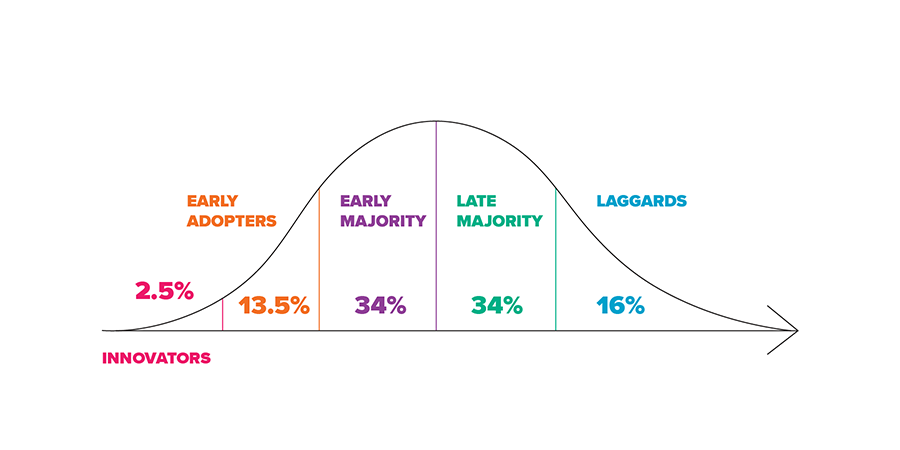The efficacy and practicality of pharmacogenetics (PGx) as a vital facet of patient-centric healthcare may still be in debate, but it won’t be for long. This is a certain trajectory for the industry, and here is why.
Millennial and iGen patients are seizing control of their healthcare in an unprecedented manner. The one-size-fits-all approach is outdated in every facet of their lives, including medical treatment. Today’s patients are more informed with greater access to their health records and medical options. To deliver the personalized care patients demand, the onus is on today’s healthcare team and their IT support staff to optimize data strategy and management. Why? Because sustainable patient-centric healthcare is not possible without them.
Compared to 2003 when Human Genome Project (HGP) was completed, the cost of genomic sequencing has dropped considerably as technology has advanced. As with any technology, costs will continue to fall while advancements are made. Genetic testing will become more affordable and in greater demand as more tech-savvy patients learn the benefits associated with PGx as part of their personalized healthcare experiences. The market is expected to surpass $22B in the next five years.

It follows, as patient demand increases, providers will strive to meet this need. The result will be a higher frequency of genetic testing prescriptions and greater use of this information in conjunction with other patient data to deliver more personalized treatment plans. This, in turn, increases the need for electronic health record (EHR) systems equipped to empower providers with PGx management and advanced analytics to meet the demands of their patients.
Ensuring that an EHR solution is prepared to differentiate itself from the competition this way is not only good for patient care, it’s good business.
The RX for PGx readiness
The EHR prescription for PGx (and digital transformation) readiness is two-fold: optimized AI/ML and blockchain.
An EHR with optimized AI-driven machine learning (ML) will deliver the automation capabilities required to manage the vast amounts of data that PGx will inevitably add to the equation. Optimized automation of patient alerts and trending is a clear and present need in today’s healthcare, but PGx will increase that demand exponentially—and relatively soon. To gain competitive edge, EHRs must allow providers to automate personalized treatment plans using PGx data and environmental factors in conjunction with traditional patient records.
Additionally, blockchain adoption will continue to rise as decentralization of data and healthcare interoperability are adopted for patient-centric healthcare. Once PGx gains greater adoption, securing this data with blockchain encryption will be as optimal as it is for other patient data stored and managed by the EHR.
There’s good reason to ensure an EHR’s AI and blockchain readiness for differentiation. Not only are these arguably the two most talked about technologies today for digital transformation, but together, AI and blockchain will ultimately deliver far greater EHR value and security.
AI and blockchain: better together
There is emerging AI that can build algorithms that work with and process encrypted data. This will mean that patient data will no longer be put at risk as a result of processing while unencrypted.
AI is better at managing blockchain as well. When it comes to managing distributed ledgers, smart contracts, and security—optimized AI is far more capable than human beings or “dumb” computers. But the benefits of pairing these two technologies goes both ways.
Because blockchain can record AI decisions on a data point-by-point basis, a much simpler and clearer view is provided for audits. With blockchain’s encryption, there is no need for fear of record tampering during audits. (This is especially applicable to human trust of robotics, but no less relevant for the secure storage and processing of PGx data.)
AI can manage and automate the encrypted files provided by blockchain, while the latter keeps a detailed and understandable account of what the former has done on behalf of the provider, and why.

Be early for greater rewards
The 2.5 percent of innovators on the technology adoption curve stand to reap the greatest benefits. Fortunately, when it comes to AI and blockchain technology, the typical risk of being first has been nullified by proven integration across multiple industries over the course of many years.
Electronic health records have become the bedrock of healthcare technology, and while centralized by design, EHR companies that provide solutions with optimal AI and blockchain readiness will stand apart in an industry notorious for technology adoption lag.
SoftServe has a healthcare team of AI/ML, big data, and blockchain experts already achieving success with AR/VR/MR, natural language processing (NLP), and robotics with applications in healthcare—and we’re at the forefront of preparing the market for pharmacogenetics.
EHR providers seeking to achieve sustained success and potential increased market share in the digitally-driven, patient-centric environment should do the same. Read more on why healthcare providers will inevitably demand PGx management in our whitepaper, Personalized medicine and the big data challenge.

